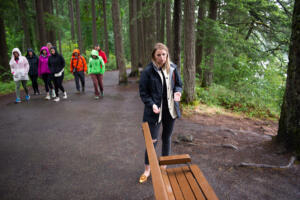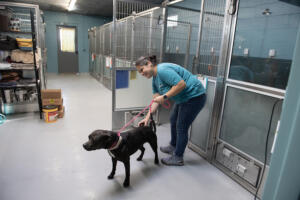A major change to the way traffic flows through the intersection at Northwest Sixth Avenue and Norwood Street in Camas is being discussed by the City Council.
Options for the heavily traveled area, which is located where traffic enters and exits Highway 14 to the west and east, include either a roundabout or a signalled intersection.
The project addresses issues including level of service, delays on side streets and safety, according to city staff.
The immediate area was primarily surrounded by residential housing until 2007, when the Sixth Avenue Commercial Center opened to the public. The development includes a gas station, car wash, drive-thru coffee shop and 8,244 square feet of retail space.
Installing a traffic control device at the intersection and meeting ADA standards for accessible design, has been part of the city’s long term plans for at least a decade. The possibility of that device being a roundabout is a more recent development.





